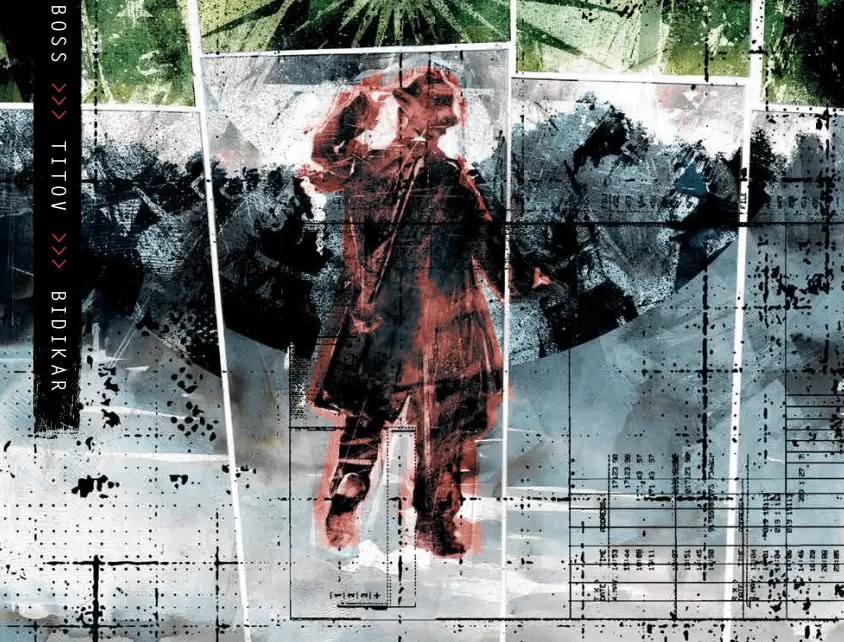Issue #7 of James Tynion IV’s conspiracy horror opus, The Department of Truth, wasn’t the first time Men in Black (MIB) appeared in comic books. Most cinephiles probably don’t realize that the blockbuster movie franchise about a secret government agency that keeps the truth about alien visitation under wraps, kicked off by Will Smith and Tommy Lee Jones in 1997, was based on a similarly themed comic that also drifted into paranormal topics.
Fewer still probably suspect that the campy wiscrack-fest came from real-life reports of mysterious men in black suits, the “UFO Silencers,” who were first brought to light when implicated in the deaths of two Air Force personnel. And they showed up quick! The legend of the MIB is almost as old as flying saucers themselves.

Image Comics
The term “flying saucer” is attributed to pilot Kenneth Arnold, who had the first modern UFO sighting on June 24, 1947 (he actually said the three objects he saw near Washington’s Mt. Rainier were boomerang-shaped and moved like “saucers skipping water” — draw your own conclusions about what that discrepancy means). Shortly after, weird-stuff peddler Raymond A. Palmer hired Arnold to investigate a case that supposedly took place before his own sighting, when a glowing object dropped a hot, “slag” type of material on two fisherman near Maury Island, also in Washington state.
Arnold didn’t think much of the so-called witnesses after meeting them. They claimed they didn’t report their encounter sooner because a mysterious man who claimed to know all about what happened had threatened them not to. The two Air Force personnel who further followed up thought the “slag” was likely just aluminum from a refinery. They took some samples anyway, and the whole thing was more and more exposed as a hoax as time went on, making it all the more tragic that the officials’ plane caught fire and crashed on their way back to California.
Author Gray Barker wrote about the Maury Island incident and its accompanying drama in his 1956 book They Knew Too Much About Flying Saucers, and didn’t shy away from speculation that the plane crash was not an accident. Barker also included the story of his friend Albert Bender, who in 1953 claimed in a popular newsletter that he’d found out what the whole UFO business was about, but subsequently shuttered his investigative organization, ended the the newsletter, and never spoke of it again.
“In my opinion, this is ground zero for the Men in Black,” says Blake Smith, host of the award-winning MonsterTalk podcast. “This is where Barker takes every story about mysterious people trying to shut down UFO research and he plugs them all into this book.”
Though MonsterTalk is subtitled the “The Science Show About Monsters,” and usually tackles topics like Bigfoot, Loch Ness, and more offbeat “cryptids” like Gef the Talking Mongoose, Smith has an interest in all things strange, and did a deep dive on existing primary sources of Men in Black case history for one episode. Turns out, there isn’t much.
Bender wrote his own book in 1962, Flying Saucers and the Three Men, in which he finally “revealed” that three men in dark suits had strong-armed him into shutting up about what he’d discovered. One might be tempted to think these MIB were government agents trying to scuttle “UFO disclosure,” but Bender said they spoke to him telepathically, and “sent” him headaches for a period of time after their visit. Eventually the MIB flew him to Antarctica and revealed themselves to be aliens, looking kind of like the Flatwoods Monster (rather than the “gray” that we see in Department of Truth #7).
“It is that blurring of the lines that becomes sort of the foundational Men in Black experience,” Smith says. “Whatever they are, they look like humans, but they might not be.”
More people started to report MIB encounters, usually when they were pressed on why they didn’t have more evidence about a UFO encounter they’d reported. The stories were all different, but most put the MIB squarely in the uncanny valley, describing them as mostly human, but not quite. Their lips might be too thin, or they look like they’re wearing too much makeup. They might have a wire sticking out their sock, or not know how to drink water. In one famous case, a doctor who’d been using hypnosis on a UFO witness was visited by a MIB who threatened him by making a penny disappear, and then hurriedly left after saying, “My energy is running low — must — go — now — goodbye.”

Men in Black sometimes appear to be wearing lipstick to cover their thin lips, and often don’t understand everyday objects. (Image Comics)
Perhaps unsurprisingly, due to the nature of the “threats,” most MIB stories go uncredited. Of course, this also means they end up being just that — stories — with very little to back up whether they actually happened or not. Smith likens the MIB legend to something like Slender Man, which, unlike the MIB, has an admitted and obviously fictional origin. Slender Man tales grew after the idea was established in a Photoshop contest on the website Something Awful, so much so that two girls tried to kill one of their classmates to appease him.
“The map has been carefully laid out by Gray Barker,” Smith says. “It’s not science that will explain this, it’s folklore.”
AIPT Science is co-presented by AIPT and the New York City Skeptics.
Join the AIPT Patreon
Want to take our relationship to the next level? Become a patron today to gain access to exclusive perks, such as:
- ❌ Remove all ads on the website
- 💬 Join our Discord community, where we chat about the latest news and releases from everything we cover on AIPT
- 📗 Access to our monthly book club
- 📦 Get a physical trade paperback shipped to you every month
- 💥 And more!













You must be logged in to post a comment.